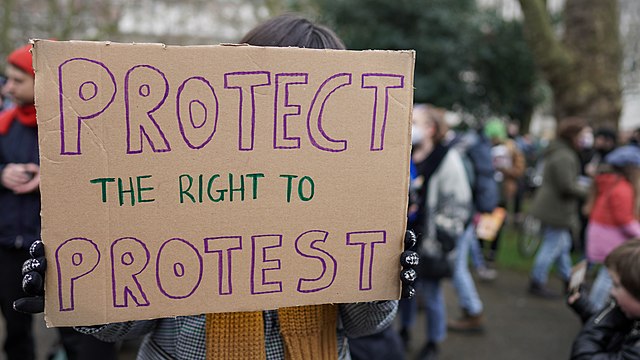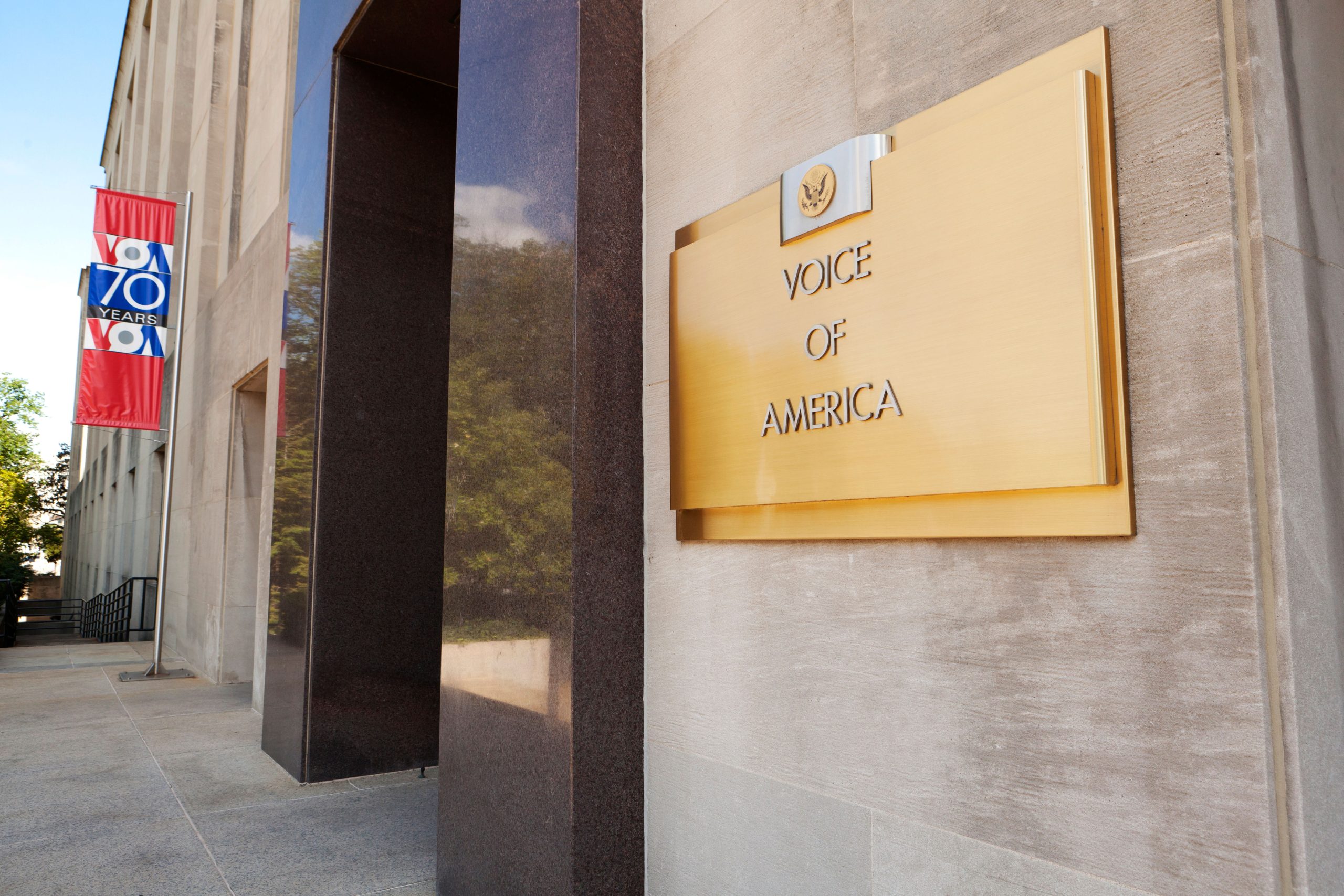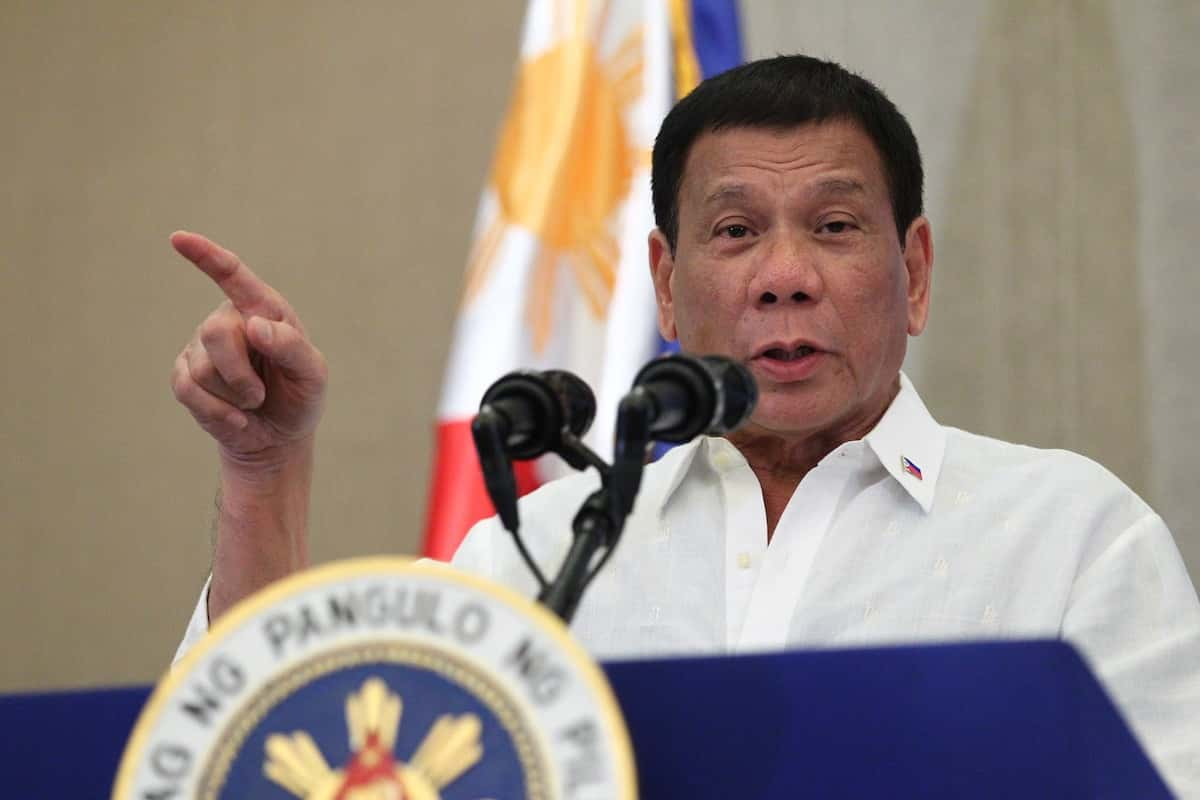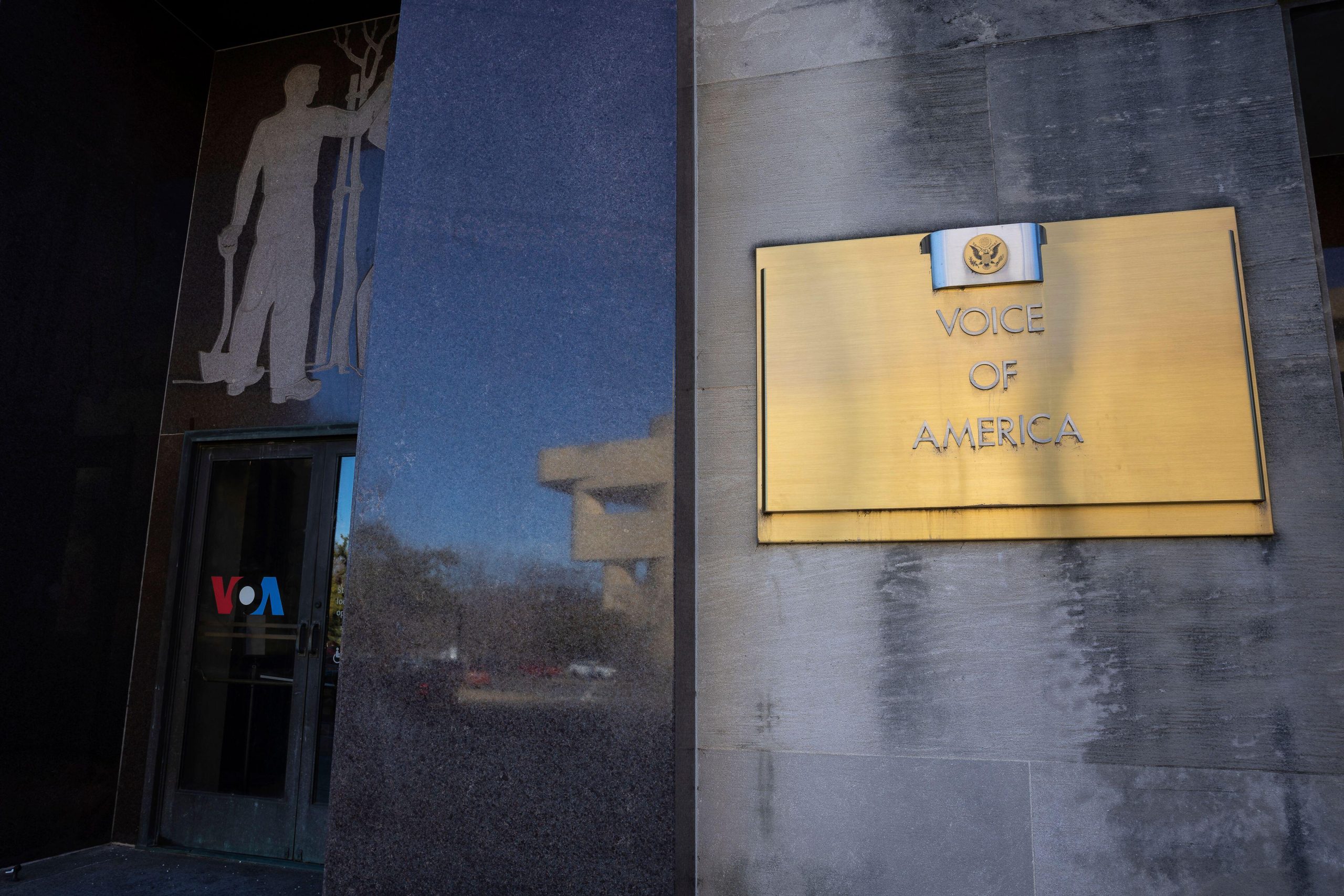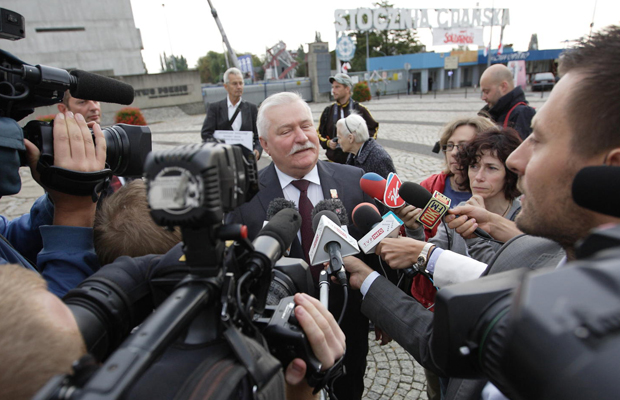
Former President of Poland Lech Walesa talks to the media at the Fallen Shipyard Workers Monument in Gdansk. (Photo: Michal Fludra/Alamy)
Poland had the largest alternative press on the eastern side of the Iron Curtain – and journalists couldn’t wait for the arrival of democracy. But after its heyday in the early 90s, the Polish media have lost their willingness to take on the powerful, argues Konstanty Gebert, who has kept a printing press, just in case. This an abridged version of an article from the latest issue of Index on Censorship magazine – an “after the wall” special. For more, subscribe here
Twenty five years ago, as the round-table talks in Warsaw between the communist government and the opposition moved forward in the transition to democracy, the courtyard of Warsaw university became a print-lovers’ paradise. All kinds of underground publications, from books to newspapers, previously distributed only under the cover of secrecy, circulated in the open, provoking delight, outrage, concern and shock from passers-by. Watching vendors hawking my own publication, the fortnightly KOS, I grappled with the idea that we might actually become a normal newspaper, sold at newsstands and not in trusted private apartments, competing for newsprint, stories and readers in a free market of commodities and ideas. My only concern was that the promise of liberty would again prove a false dawn. I decided that, if we were to go “overground”, we should stash all our printing equipment and supplies somewhere, ready to pick up our clandestine work again if the political situation soured. This, to my eyes, was the greatest threat. Little did I know.
The alternative press had been both the backbone of the underground and one of its most distinctive features: no other communist country had an output that matched Poland’s. The Polish National Library has collected almost 6,000 different titles for the years 1976 to 1989 and the estimated number of readers is assessed at anything from 250,000 upwards. In 1987, KOS published a circular, issued by the regional prosecutor in the provincial industrial town of Płock. It informed his staff that if, during a house search (in a routine criminal investigation, not a political case), no underground publications were found, they needed to assume the inhabitants had been forewarned and had the time to clean up. In other words, the communist state assumed that the absence, not the presence, of underground publications in a typical Polish household was an anomaly that demanded an explanation.
This meant that, when the transition initiated by the round-table talks rushed forward at an unexpectedly speedy pace, we actually had trained journalists ready to take over hitherto state-controlled publications and, more importantly, set up new ones from scratch. The daily Gazeta Wyborcza (the Electoral Gazette was set up to promote Solidarity candidates in the first, semi-free elections of June 1989, but continued beyond that), which proudly advertised itself as the first free newspaper between the Elbe and Vladivostok, became an instant hit. Many formerly underground journalists, including myself, joined the paper, making it, for a while, a collective successor of the entire underground press. Its print run, initially limited by state newsprint allocations to 150,000 copies, soared to 500,000 once the remains of the communist state had been dismantled, and then dropped to under 300,000, as print media lost readers.
The newspaper’s unparalleled success (also financial: its publisher Agora went public in 1999 and shares initially did well) was due both to the extraordinary importance attributed under communism to the printed word and to the belief that the paper expressed “the truth” as opposed to “the lie” of the communist media. Under the government’s tightly controlled system of public expression (everything, down to matchbox labels, had to clear censorship), reality was defined by what was written, not by what was witnessed.
The underground press described a reality totally at odds with the image presented in the official media, yet validated by everyday experience: it was therefore “true”, and this exposed the communists as liars, who, moreover, were powerless to do anything about being exposed, since underground media continued to flourish, police repression notwithstanding. At the same time, the underground press was if not a propaganda venture at least an advocacy one, devoted not to the objective and non-partisan discussion of reality but to the promotion of a political current: the anti-communist opposition. Then we saw no contradiction in considering ourselves independent while supporting Solidarity candidates.
This contradiction was to explode shortly after. In 1990, barely a year after the transformation began, the first democratic presidential elections pitted Solidarity leader Lech Wałesa against his more politically liberal former chief adviser and first non-communist prime minister, Tadeusz Mazowiecki. The unity of the anti-communist movement did not survive the defeat of its adversary – and rightly so. Gazeta Wyborcza endorsed Mazowiecki, to the outrage of many of its readers, even if they, too, voted mainly for the former PM. “Your job,” one reader wrote, “is not to tell me how to vote. Your job is to give me information so I can make up my mind myself.” The newspaper could no longer count on the uncritical trust of its readers, yet it kept the position of market leader, a rarity for a quality newspaper, until it was dethroned in 2003 by tabloid Fakt.
Gazeta Wyborcza has also become the most reviled paper, at least to its adversaries in the right-wing press. The Wałesa-Mazowiecki split exposed a deep structural fissure inside the anti-communist camp, between the conservative-nationalist Catholics, who endorsed the eventual winner, and the liberal-cosmopolitan secularists, who supported the former PM. As this fissure grew (deep internal divisions within both camps notwithstanding, and regardless of their shared hostility to the former communists), Gazeta Wyborcza became, in the eyes of the right, the embodiment of an alleged “anti-Polish” project – the fact that editor- in-chief and former political prisoner Adam Michnik is Jewish was sometimes proof enough – that had to be destroyed at all costs. The declining fortunes of the newspaper in recent years have been taken by the right as proof that Poland is now “finally becoming truly independent”.
An unexpected challenge came from the former spokesman of the communist government, Jerzy Urban, who in 1990 launched his weekly publication Nie (“no” in Polish). As Urban had been easily the most hated man in Poland, his enterprise was considered doomed in advance by most – and yet Nie proved vastly successful, claiming print runs of 300,000 to 600,000 (no independent audit was available, but these estimates are credible). The weekly publication – a mixture of Private Eye-style satire, hard porn, vulgar language and excellent investigative reporting – became an instant hit, because it concentrated on a major area neglected in the anti-communist media: the anti-communists themselves. Gazeta Wyborcza and other new or restructured media had been derelict in their duty of investigating their friends in power with the same determination and mis-trust we had previously applied against the communist authorities. This was true of our coverage not only of government, but also of the Catholic church. Remembered as a victim of communist persecution and as an ally and protector of the underground (even if the reality had been more complex), trusted and revered by the overwhelming majority of the nation, the church was really beyond public criticism. Urban rightly saw in that a potential killing.
And he went after anti-communist ministers and Catholic bishops with a vengeance that struck a chord, not only among the (substantial) former-communist readership, but also among many ordinary readers, who saw in the new authorities more of a continuation of the powers-that-be of old than we would care to admit. Even if uniformly vulgar and occasionally misinformed, his criticisms were painful and to the point. The mainstream media eventually caught up, investigating the secular and ecclesiastical authorities as they should, and, eventually, pushed Urban into a niche of spiteful readers, who appreciate his vulgarity more than his incisiveness; his weekly has a current print run of around 75,000. But it took the twin lessons of the internal political split in Solidarity and the unexpected success of a seemingly compromised propagandist to force mainstream media to understand the basic obligations of their job.
In broadcasting, changes were less dramatic, as there were no trained cadre of independent radio or TV journalists to replace the old hacks: there were hardly any underground broadcast media. More importantly, the new governments, left and right, proved just as reluctant as their predecessors to give up on controlling TV, in the unfounded belief that this helps one win elections. In fact, only one government has been re-elected in the past 25 years, even though all have had as much control over state TV as they wanted and private TV has generally been politically timid. Pressure on radio was much less obvious, and private radio stations have flourished. The most successful one is perhaps Radio Maryja, a Catholic fundamentalist broadcaster, sharply critical of democracy and European integration, and long accused of producing anti-semitic content. From being the object of criticism of the church establishment for its independently extremist line, it has become its de facto mouthpiece: it can get dozens of people out on the street and get MPs elected.
Overall, however, the underground era and the first few years after 1989 were probably the heyday of Polish journalism. But from a high point of newspapers being the visible incarnation of collective political triumph, we have come to a situation when readers read little, trust even less, and believe that media have mainly entertainment value at best, and represent a hostile power run amuck at worst. New media, though immensely popular due to high internet access (53.5 per cent), still run into the problems of bias and low credibility. The printing equipment I had stashed away a quarter-century ago still gathers dust in a Warsaw cellar, its technology as remote from today’s electronic potential as the medium it produced is from today’s media.
Konstanty Gebert is a Polish journalist. He has worked at Gazeta Wyborcza since 1992 and is the founder of Jewish magazine Midrasz. He was a leading Solidarity journalist, and co-founder of the Jewish Flying University in 1979.
This article appears in the summer 2014 issue of Index on Censorship magazine. Get your copy of the issue by subscribing here or downloading the iPad app.


